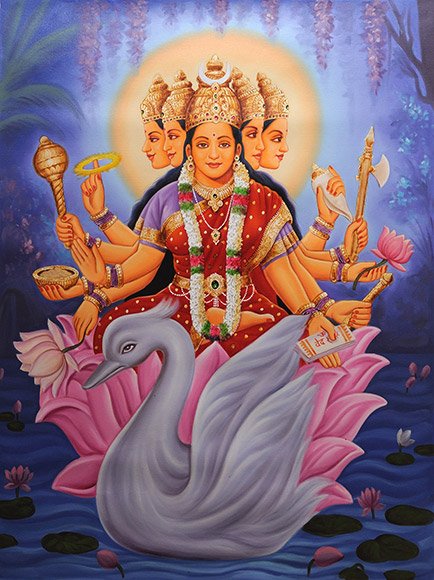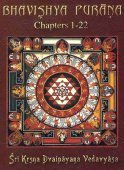Naradapurana, Nāradapurāṇa, Narada-purana: 6 definitions
Introduction:
Naradapurana means something in Hinduism, Sanskrit. If you want to know the exact meaning, history, etymology or English translation of this term then check out the descriptions on this page. Add your comment or reference to a book if you want to contribute to this summary article.
In Hinduism
Purana and Itihasa (epic history)
Source: Cologne Digital Sanskrit Dictionaries: The Purana IndexNāradapurāṇa (नारदपुराण).—One among the mahāpurāṇas comprising 25000 ślokas.*
- * Bhāgavata-purāṇa XII. 7. 23; 13. 5.
Nāradapurāṇa (नारदपुराण) refers to one of the eighteen Major Puranas according to the Matsyapurāṇa and other traditional lists of Puranic literature: a category of ancient Sanskrit texts which gives a huge contribution in the development of Indian literature.—The lists of eighteen Mahāpurāṇas (e.g., nāradapurāṇa) and eighteen Upapurāṇas are not same everywhere, as some names are dropped in some references whereas some are included in others. It can be noticed that, except the Vāyuapurāṇa and the Śivapurāṇa, the names of the Mahāpurāṇas are similar in almost all the Purāṇas.

The Purana (पुराण, purāṇas) refers to Sanskrit literature preserving ancient India’s vast cultural history, including historical legends, religious ceremonies, various arts and sciences. The eighteen mahapuranas total over 400,000 shlokas (metrical couplets) and date to at least several centuries BCE.
Chandas (prosody, study of Sanskrit metres)
Source: Shodhganga: a concise history of Sanskrit Chanda literatureNāradapurāṇa (नारदपुराण) is one among the 18 mahāpurāṇas of Indian tradition. It describes the magnificent of god-sage Nārada in particular and ancient history in General. This purāṇa deals with the science of prosody in its 57th chapter. It summarizes the whole prosody in 21 verses. The description is in the form of conversation between sage Sanandana and Nārada.
At first the Nāradapurāṇa gives the division of metres, and then describes the name of the gaṇas, trikas for varṇavṛtta as well as gaṇas for mātrā vṛttas. The nature of pāda, definition of sama-ardhasama-viṣama-vṛttas, daṇḍaka metres are also described here. The purāṇa also highlights the names of the 26 Vedic metres and deals with the methods of prastāra and other pratyayas of prosody.

Chandas (छन्दस्) refers to Sanskrit prosody and represents one of the six Vedangas (auxiliary disciplines belonging to the study of the Vedas). The science of prosody (chandas-shastra) focusses on the study of the poetic meters such as the commonly known twenty-six metres mentioned by Pingalas.
Languages of India and abroad
Sanskrit dictionary
Source: Cologne Digital Sanskrit Dictionaries: Aufrecht Catalogus Catalogorum1) Nāradapurāṇa (नारदपुराण) as mentioned in Aufrecht’s Catalogus Catalogorum:—Jones. 407. [Mackenzie Collection] 46. Io. 398. 1007. 1799. W. p. 129. Oxf. 9^a. 11. L. 506. 1021. 1680. Khn. 28. K. 26. B. 2, 12. 16. 18. Report. V. Ben. 49. 52. 57. Bik. 206. 207. 225. Tu7b. 14. Kāṭm. 1. Pheh. 5. Rādh. 39. Oudh. Viii, 6. Ix, 4. Xiii, 42. Np. Vi, 34. Burnell. 188^a. 189^a. Bl. 2. Bh. 17. P. 9. Poona. 652. Ii, 39. 159. Taylor. 1, 126. 292. Oppert. 6066. 6832. 6952. 7345. Ii, 2605. 3061. 3210. 4678. 4762. 5217. Rice. 72. Mentioned in Kūrmapurāṇa Oxf. 8^a, in Varāhapurāṇa Oxf. 59^a, in Śivapurāṇa Oxf. 65^a, in Gaṇeśapurāṇa Oxf. 78^a, in Devībhāgavatapurāṇa Oxf. 79^b, in Tantrasāra Oxf. 95^a. Nāradapurāṇe Kārttikamāhātmya. K. 22.
—Dattātreyastotra.
—Pārthivaliṅgamāhātmya. W. p. 356.
—Puruṣottamamāhātmya. B. 2, 46.
—Mṛgavyādhakathānaka. Peters. 1, 118.
—Yādavagirimāhātmya. Burnell. 188^a. Taylor. 1, 293. Oppert. Ii, 645. 3524. 3764. 4117. 7718.
—Viṣṇumāhātmya. Burnell. 188^a.
—Śrīmuṣṇamāhātmya. Burnell. 188^a. Rice. 90.
—Saṃkaṣṭanāśanagaṇapatistotra. Laghu Bṛhannāradīyapurāṇa. Pheh. 5.
Nāradapurāṇa has the following synonyms: Nāradīyapurāṇa, Bṛhannāradapurāṇa.
2) Nāradapurāṇa (नारदपुराण):—read K. 28. Yādavagirimāhātmya. read Oppert. 7715 instead of 7718.
3) Nāradapurāṇa (नारदपुराण):—Bl. 29. Hz. 62. Stein 202. Nāradapurāne 'dhikamāsamāhātmya. Peters. 4, 12.
—Kokilāvrata. Fl. 17.
—Kokilāvratodyāpana. Stein 202.
—Caturāśramadharmakathana. Stein 202.
—Phālgunakṛṣṇacaturthīvrata. L. 4221.
—Śrāddhavidhi. Stein 202.
Nāradapurāṇa has the following synonyms: Nāradīyapurāṇa, Bṛhannāradapurāṇa.
4) Nāradapurāṇa (नारदपुराण):—bṛhat. Ulwar 804. Nāradapurāṇe Haribhaktisudhodaya. Ulwar 1612.
5) Nāradapurāṇa (नारदपुराण):—Ak 157. As p. 91 (2 Mss.). 200. Bc 160. Cr. Cs 4, 53 (2, 13-38). 198. 219. 276. Io. 398. 732. 1007. 1799. 2493. 2639. Nāradapurāṇe Kokilāvrata. L.. 202.
—Puruṣottamāhātmya. As p. 108. L.. 204 -206.
—Prabodhinīvrata. L.. 203.
—Lakṣmīsahasranāman. Ak 232.
Nāradapurāṇa has the following synonyms: Bṛhannāradapurāṇa.
Source: Cologne Digital Sanskrit Dictionaries: Monier-Williams Sanskrit-English DictionaryNāradapurāṇa (नारदपुराण):—[=nārada-purāṇa] [from nārada] n.
Sanskrit, also spelled संस्कृतम् (saṃskṛtam), is an ancient language of India commonly seen as the grandmother of the Indo-European language family (even English!). Closely allied with Prakrit and Pali, Sanskrit is more exhaustive in both grammar and terms and has the most extensive collection of literature in the world, greatly surpassing its sister-languages Greek and Latin.
Kannada-English dictionary
Source: Alar: Kannada-English corpusNāradapurāṇa (ನಾರದಪುರಾಣ):—[noun] one of the eighteen Hindu Purāṇas, supposed to have been written by the sage Nārada.
Kannada is a Dravidian language (as opposed to the Indo-European language family) mainly spoken in the southwestern region of India.
See also (Relevant definitions)
Partial matches: Purana, Narada, Puraana.
Ends with: Brahmanaradapurana, Brihannaradapurana, Shrinaradapurana.
Full-text (+49): Naradiyapurana, Brihannaradapurana, Shrinaradapurana, Samkashtanashanaganapatistotra, Vishnumahatmya, Parthivalingamahatmya, Mrigopakhyana, Mrigavyadhakathanaka, Bhaktisudhodaya, Naradapancaratra, Haribhaktisudhodaya, Shrimushnamahatmya, Shravanadvadashivrata, Yadavagirimahatmya, Dattatreyastotra, Rukmangadacaritra, Manda, Pidita, Atidripta, Balaka.
Relevant text
Search found 19 books and stories containing Naradapurana, Nāradapurāṇa, Narada-purana, Nārada-purāṇa, Nāradapurāna, Nārada-purāna; (plurals include: Naradapuranas, Nāradapurāṇas, puranas, purāṇas, Nāradapurānas, purānas). You can also click to the full overview containing English textual excerpts. Below are direct links for the most relevant articles:
The Vishnu Purana (by Horace Hayman Wilson)
6. The Naradīya Purāṇa < [Preface]
The Matsya Purana (critical study) (by Kushal Kalita)
Part 1b - The Vedic and Purāṇic sources of Architecture (vāstu) < [Chapter 7 - Art and Architecture in the Matsyapurāṇa]
Part 1 - An Introduction to Purāṇas < [Chapter 1 - Introduction]
Part 5 - Yoga philosophy in the Matsyapurāṇa < [Chapter 5 - Philosophy in the Matsyapurāṇa]
Vishnudharmottara Purana (Art and Architecture) (by Bhagyashree Sarma)
1. A General Note on Purāṇas < [Chapter 1 - Introduction]
Expiatory Rites in Keralite Tantra (by T. S. Syamkumar)
7. Expiatory Rites in Epics and Purāṇas < [Chapter 1 - Expiatory Rites: Concept and Evolution]
The Markandeya Purana (Study) (by Chandamita Bhattacharya)
1.6: Number of Purāṇa < [Chapter 1]
Related products
